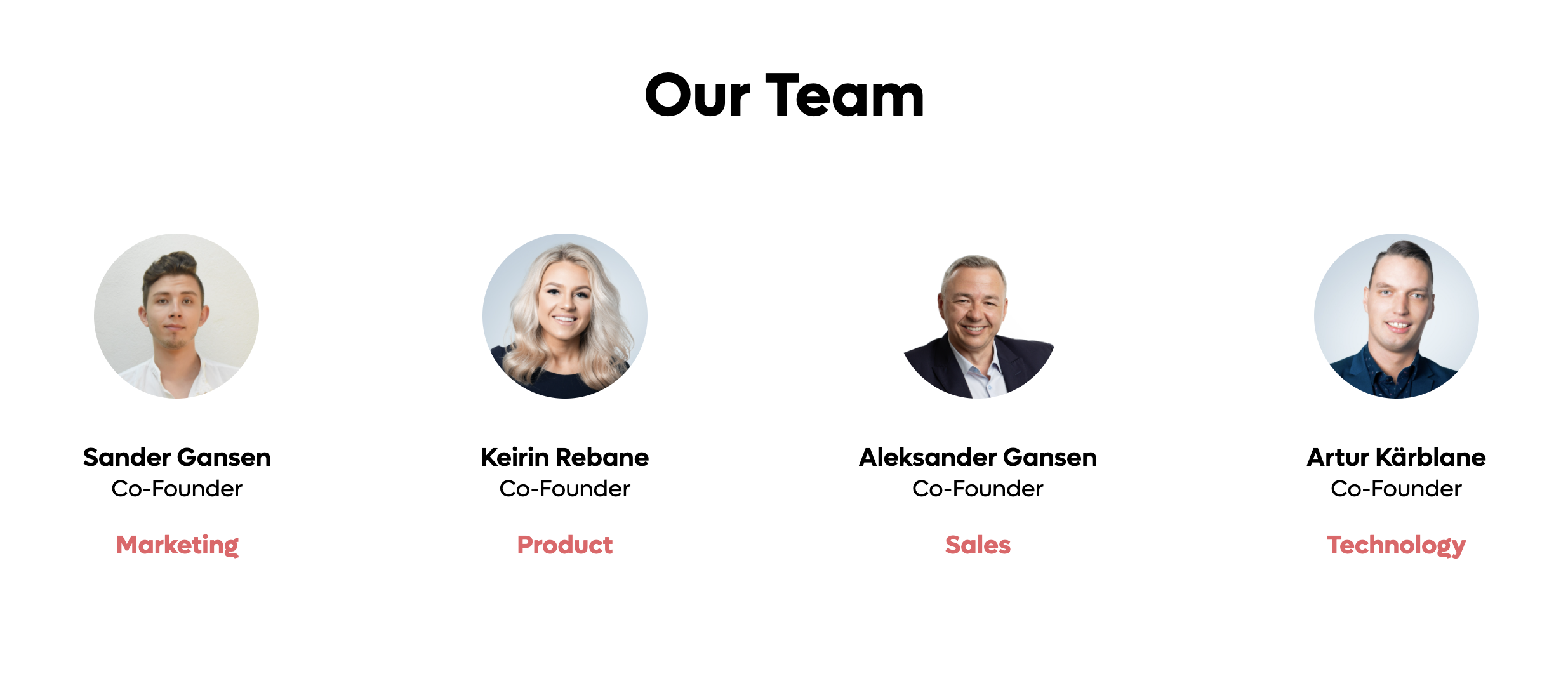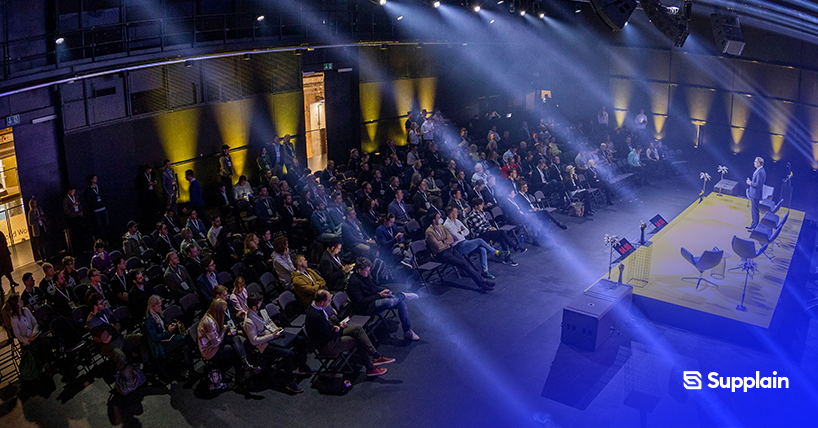Let’s connect the entire supply chain on a transparent protocol
The manufacturing and commerce sectors are in search of innovation.
Not just technological innovation…
But also trust!
Because if there’s one thing that’s holding the whole economy back, then it’s the lack of trust among different stakeholders.
The problem is that parties across industries are not loyal to one another. Instead, they are always looking for a better deal from somewhere else.
However, they are doing a lot of manual work or using too many different tools to access those deals.
This results in an ever-increasing amount of partners, tools, and other data sources that do not share the information — if there’s a trace at all.
And this makes it almost impossible for outside partners to offer special deals or nearly any type of financial services to those companies.
Add globalization to the mix, and we’ll get supply chains that are significantly more complex to manage…
Due to all previously mentioned reasons, the cost of operating supply chains makes up two-thirds of the final cost of traded goods, while 7% of the global value of trade is absorbed in documentation costs alone.
That said, we can turn all this around by building a transparent protocol.
It’s a massive & fragmented market
As you might understand, we’re talking about changing one of the most significant industries.
…and even we aren’t stupid enough to think we can do this quickly.
Instead, we see that the change needs to start from two main fields:
- eCommerce
- Logistics
That’s because eCommerce platforms still need to be innovative to win clients from their non-digital counterparts, and they also need digital logistics service providers to cater to their customers.
Going more specific, we believe Europe can lead this change, as particular eCommerce platforms already control other big markets or these markets are not developed enough yet.
But before going into more detail, let us present some exciting figures.
- There are over 800,000 online stores only in Europe.
- In total, 9.3 billion parcels were sent in Europe as of 2018.
Whereas the global parcel volume reached 87 billion in 2018. - The logistics industry itself is a USD 9.6T market, growing at a 5% CAGR.
However, the largest 50 companies share only 3.5% of the market. - As of late, the COVID-19 pandemic and the resulting lockdowns have caused exponential growth in the usage of eCommerce and parcel shipping, which is believed to be growing further even after the pandemic.

So what are we building?
Supplain is building a decentralized supply chain protocol.
We’ll start by automating logistics management & partner communication while enhancing products’ traceability and giving companies access to financial services they otherwise couldn’t easily use.
In the longer horizon, we aim to build a protocol that brings traceability, transparency, and trust to the supply chain industry while removing all the middle layers between the service providers and clients.
- No more time-wasting on managing different service providers.
- No more extra or hidden charges on any of the services.
All that while giving access to previously unavailable services. For example, trade financing and on-demand insurance, as well as automated import duty and other tax calculations, analytics, and integrations to many other systems.
And the only way for this to be attainable is to make it fully decentralized while ensuring all parties that it is all running as a protocol that is both independent and wholly owned by its users.

And what’s the exact plan?
We have a multi-year roadmap that’s divided into phases.
Phase 1 — Q4 2021
In the beginning, we’ll focus on building the infrastructure that would enable companies to bring their logistics-related data into one place.
For that, we’ll be launching an initial protocol that connects online stores and logistics service providers while providing them with open APIs, unified payment modules (for both crypto & fiat), and tracking tools.
One of the key components in this will be building an algorithm that analyses shipping quotes from different partners and gives customers the best offer based on their specific needs (e.g. checking shipping routes & item types).
In addition, we’ll be building out the initial green logistics capabilities, empowering protocol users to choose to favor green delivery options.
At this point, our first value propositions will be:
- Integrate one protocol to access various service providers.
- Manage all logistics-related operations in one place.
- Get it all for free.*
* This is one of the most crucial bits!
Our previous experience in building digital logistics tools has taught us that the only way to play nice with the big logistics service providers is to let them charge their usual rates from the clients without trying to get a cut from there.
Nor do we want to charge a protocol usage fee, as it would slow down adoption.
Instead, we’re looking into paying tokens to both logistics service providers and other protocol users to speed up the adoption and decentralize the ownership.
Phase 2 — Q2 2022
That’s when we’ll start introducing the first unique utilities.
For that, we’ll introduce blockchain-based electronic documents and insurance offers, along with tax and duty calculation & management modules.
One of the key components in this phase will be standardizing the information coming in through different data sources to create immutable electronic documents that enable us to offer various financial services and create overall traceability for everything our users do on the protocol.
At this point, our additional value propositions will be:
- Get verified electronic documents that 3rd parties trust.
- Get access to new insurance options.
- Automatically pay your CO2, VAT, and Duty Taxes.
In this phase, we will also introduce first fees to the customers.
This is needed to ensure that the protocol would generate money that can be invested in building further utility for its users.
Phase 3— Q4 2022
That’s when we’ll start introducing the first real DeFi elements.
For that, we’ll introduce invoice payment and factoring tools, along with staking opportunities. In addition, we’ll launch the analytics platform.
One of the key components in this phase will be creating first staking solutions, allowing our token holders to earn fees.
At this point, our additional value propositions will be:
- Buy now, pay later.
- Analyze your top routes, primary partners, average costs etc.
- Stake your tokens for additional revenue.*
* As our partners will earn tokens for using the protocol, they can start earning extra revenue via staking those tokens — this opens up exciting avenues…
Phase 4— Q2 2023
That’s when we’ll become a supply chain DeFi protocol.
For that, we’ll launch trade financing solutions along with liquidity pools and introduce carbon credits trading.
One of the critical components in this phase will be building out additional trade financing solutions, such as advance payments or credit lines that enable the protocol users to grow their businesses faster.
At this point, our additional value propositions will be:
- Get business loans.
- Buy or sell carbon credits.
- Earn interest from providing liquidity.
Phase 5— Q4 2023
That’s when we’ll start building out other supply chain management services.
For that, we’ll start integrating warehouses and packaging providers while introducing consolidation & legging tools.
By that point, we will have a strong partner network and enough data from users to start building algorithms that help further to optimize logistics management for different types of protocol users.
At this point, our additional value propositions will be:
- Manage all warehousing and packaging-related operations in one place.
- Start decreasing your overall logistics costs.
Phase 6— 2024 and onwards…
That’s already far along that our plans might change, depending on the growing number of users, partners, and 3rd parties building their services on top of Supplain’s protocol.
That said, we’ll be introducing further management and prediction tools and more trade financing solutions for sure.
In addition, these are some of the potential fields we might look into:
- Fleet Management & Optimisation
- Peer to Peer Logistics Marketplace
- Distribution Services Management
- Route Optimisation Management
- Inventory Management
- Supply Chain Visibility
- Last-Mile Deliveries
- Same-Day Delivery
- Special Deliveries
- Other Mobility Services

Cool — I want to help!
We have some exciting years ahead of us.
…and when ideating all this, we decided that we’d be taking an unconventional path forward.
Instead of starting small, raising some angel money and seeing where it leads, we are first putting together the early community with whom we’ll build it all.
The community is named World of Freight.
To be more specific, we decided first to create and sell out an NFT collection, in which the digital art acts as a ticket for the amazing ride ahead.
In exchange for buying this ticket, you’ll get a front-row seat in building Supplain protocol with us, becoming our “Board Observer”.
And this enables you to hear our plans, give us feedback, see how we’re progressing — and if you want, then join us in the building process.
Let’s ride together!
These might be of interest:


![Here are the best NFT games [Updated List]](https://strapi.supplain.io/uploads/What_is_so_special_about_a_World_of_Freight_NFT_and_what_will_move_the_project_forward_b89946b520.png)
